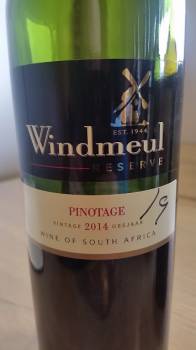Finalists for Absa Top 10 Pinotage Awards 2015 reviewed
By Christian Eedes, 9 September 2015
An extraordinarily gracious reception by De Wet Viljoen, cellarmaster of Neethlingshof in Stellenbosch, and also vice-chairman of the Pinotage Association who today laid on a blind tasting of the 20 finalists in this year’s Absa Top 10 Pinotage Awards.
Here’s how I rated the line-up:
94
Windmeul Reserve 2014
Price: R100
Red and black fruit, floral perfume plus some toasty oak but only a hint. Full but balanced with bright acidity and fine tannins. Intense but not overblown. Great length.
93
Sumaridge 2013
Export only
Red and black fruit, flowers and attractive oak. Medium bodied with lovely freshness and fine tannins. Elegant and poised.
92
Kanonkop 2010
Not available
Red and black cherry, some floral fragrance and a hint of milk chocolate. Good fruit expression, integrated acidity and some savoury developed character. Balanced and already quite mellow.
Wildekrans Barrel Select 2013
Price: R242
Red cherry, just a hint of banana, vanilla and spice. Medium bodied with a good line of acidity and fine tannins. Layers of flavour.
91
Altydgedacht 2013
Rijk’s Reserve 2011
90
Diemersdal Reserve 2014
89
Ayama 2013
Kanonkop 2012
Neethlingshof 2014
Perdeberg The Dry Land Collection 2012
Overhex Survivor 2014
88
Beeslaar 2013
87
Flagstone Writer’s Block 2013
Lanzerac Pionier 2012
Môreson The Widow Maker 2013
86
Dewaldt Heyns Weathered Hands 2012
Rijk’s 2011
85
Eikendal 2013
Corked
Groot Constantia 2013
The Windmeul Reserve 2014 was a revelation. I tasted with Hennie Coetzee and Maggie Mostert of Batonage.com as well as consulting winemaker Jonathan Snashall and it was collectively our top wine. This Paarl cellar has had success with a pretty hard-core version of Pinotage in recent times but this vintage shows real composure and complexity.
Some general observations: Pinotage remains a somewhat alternative category in terms of basic flavour profile – sour cherries and plums but also earth and a certain braaivleis chariness. Acidities on the 20 wines above seemed relatively hard, perhaps because it’s an early ripening variety which comes into cellar with high malic acid levels, this dropping out during fermentation and therefore requiring high tartaric acid additions to compensate. Any winemakers want to chip in here? Tannins, too, often seemed less than properly ripe.
On the whole, however, the category is vastly improved compared to five or 10 years ago. Acetone, banana, burnt rubber and bitterness which used to plague even the most ambitious offerings are very much less in evidence. Wines showing even more lightness of touch would be welcome but that applies to all local reds.
For the official winners, click here.









Comments
0 comment(s)
Please read our Comments Policy here.